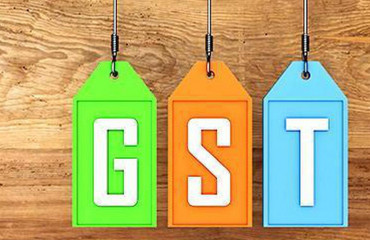
In 2016, the Reserve Bank of India (RBI) Act was amended to give flexible inflation targeting (FIT) statutory status. India’s target was fixed at 4%, with a tolerance band of plus or minus 2%. As the second five-year term of this framework comes up for review in March 2026, it is time to ask whether FIT has served India well and what may need to be refined.
In 2016, the Reserve Bank of India (RBI) Act was amended to give flexible inflation targeting (FIT) statutory status. India's target was fixed at 4%, with a tolerance band of plus or minus 2%. As the second five-year term of this framework comes up for review in March 2026, it is time to ask whether FIT has served India well and what may need to be refined.
Macroeconomic outcomes: Average inflation during 2010–2015—before FIT—was 8.7%. Since 2016, it has fallen sharply to 4.8%, the steepest fall among Asian peers that adopted FIT. Non-FIT economies show a patchy record on price stability—China, Hong Kong and Bangladesh managed modest declines, but Malaysia saw prices rise.
India has also reduced inflation uncertainty. Other Asian FIT adopters saw little success, with some even experiencing greater price swings.
The sustained decline in inflation and its volatility reflects better coordination between India's fiscal and monetary policies. In addition, favourable supply shocks and base effects have softened food and overall inflation. Further, global factors such as easing energy and core inflation coupled with monetary tightening further moderated price pressures.
Importantly, this did not come at the cost of growth: our average real GDP growth held steady at 7.3% from 2016-17 to 2024-25 (excluding covid-year 2020-2021) versus 6.8% from 2012-13 to 2015-16. Despite disruptions like the GST rollout and covid, India's FIT framework has proven resilient.
Transparency and communication: FIT has enhanced transparency in monetary policy. According to the transparency index by Dincer, Eichengreen and Geraats (2022), India outperformed most Asian countries in terms of central bank transparency (on data till 2019). RBI has aligned its communication with global standards. The monetary policy committee (MPC) meets six times a year, on par with many developed nations. RBI also publishes MPC minutes two weeks after meetings, faster than the four-week gap common in other Asian economies.
Also, RBI has embraced innovative channels such as podcasts to address the public and markets. These improvements and transparency efforts may explain India's success in controlling inflation, as studies suggest that greater transparency helps lower inflation by influencing expectations.
Headline versus core inflation debate: India, like most inflation-targeting economies, rightly uses the headline readings of its consumer price index (CPI) as its FIT gauge. While it's more volatile than core inflation, it reflects the real cost of living and shapes expectations. The choice is well grounded. Anand, Ding and Tulin (IMF, 2012) show that headline inflation significantly drives core inflation through wage and price changes. Crucially, it determines household welfare and its use gives monetary policy public credibility.
Recent studies indicate that monetary policy transmission has strengthened under the FIT regime, with interest rates more responsive to policy changes. This reflects both improved credibility and structural shifts in spending.
The 2022-23 Household Consumption Expenditure Survey shows that food's share fell from 52.9% to 46.3% in rural areas and 42.6% to 39.1% in urban areas. As non-food items—which are more sensitive to rates—gain weight in the 2026 CPI revision, transmission will improve further. By reflecting demand-driven price pressures more accurately, headline inflation will let monetary policy shape expectations, stabilize markets and maintain credibility better.
GST reforms: The government's recent GST rate cuts are also expected to ease inflation. An SBI Research study suggests CPI inflation could decline by 65-75 basis points by 2026-27 even on a partial pass-through of the cuts. GST on essential items falling from 12% to 5% or nil is expected to trim inflation by some 25-30 basis points, assuming a 60% pass-through, while services rate tweaks could reduce it by another 40-45 basis points, an estimate based on 50% transmission.
The case for a narrower target band: While India's inflation has broadly stayed within the 2-6 % range, it has tended to hover near the upper bound (6.2% in 2020-21 and 6.7% in 2022-23). Estimates suggest that CPI inflation will stay low. India should, therefore, narrow its tolerance band to 1 percentage point above and below the 4% target. Economies such as the Philippines, Thailand and Indonesia have adopted this band. A tighter target band would strengthen RBI's credibility and reinforce its commitment to price stability.
In sum, India's inflation-targeting framework has shown tangible results, marked by falling inflation numbers and greater price stability, improved transparency and steady economic growth. While it is not without flaws, the framework held up well even amid covid and other global disruptions.
With the 2026 review on the horizon, policymakers face the task of fine-tuning the framework without losing its core strength. Headline CPI inflation should continue to serve as the target for monetary policy, even as GST reforms make space for the tolerance band to be tightened. What has worked well so far could work even better.
The authors are, respectively, an assistant professor at IRMA, Tribhuvan Sahkari University, and an assistant professor at the Liberal Arts Department, IIT Hyderabad.
